We moved to a rural property in late 2023; having my own private farm land meant new opportunities – hunting small game was back on the menu.
It wasn’t long before I noticed a few spring bunnies frolicking in our paddocks. Whilst at first it felt almost criminal getting the hunting kit on for a few small bunnies, it didn’t take too many goes until I remembered how much fun it was! But then when I thought about it, it was how I’d started out hunting, so it was just like slipping back into an old routine.
The ability to grab a .22 and go for a wander after dinner or grab the handheld thermal and spotlight for a night session with my youngest, Luca, has become both a great way to scratch the hunting itch and reignite the thrill of small-game hunting. With bunnies, hares and magpies, turkeys and the odd noisy annoying plover thrown in for good measure, I have plenty of opportunities.
Generally, I’d stick to my .22 semiauto; living rurally in a farming community, I’m considerate of neighbours with their animals. Consequently, the shotguns are seldom taken out due to the additional noise factor.
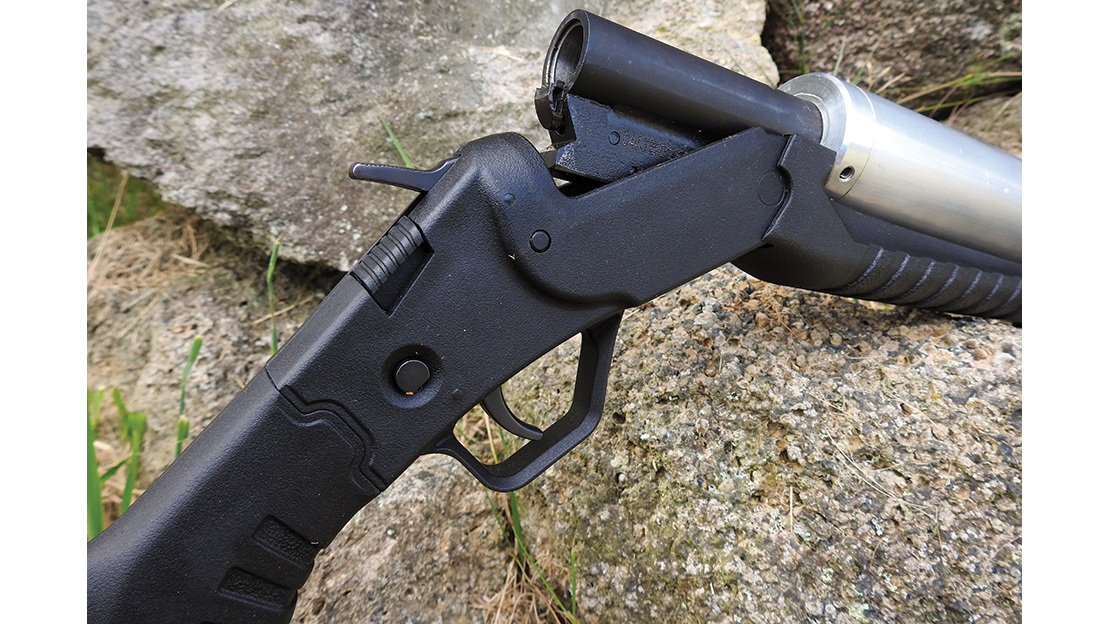
Two New Models
When I caught up with Fraser from Owl Optics at the Sika Show late last year, he informed me they now have a couple of new options in the FSS suppressed shotgun range, which naturally piqued my interest. After a few emails, we agreed I’d review both the new FSS .410 and 20-gauge models.
I’ll come clean: this is my first firearm review for the mag … I’ll do my best to cover off the technical points, but I’ll also focus on both why you’d want to go down the suppressed shotgun route and their performance in the field.
There are obvious reasons that come to mind, like reduced noise factor and reduced recoil – of course, these are both valid and excellent reasons, but not necessarily the only reasons.
NZRod&Rifle reviewed a first-generation version of this product in 2021: the FSS .410 suppressed shotgun (Vol 42, Issue 4). Both the .410 and the 20g, the subjects of this review, are built on a Rossi Montenegro single-shot break-action platform with synthetic black stocks.
First Impressions
My first thought was: what’s the balance going to be like? When you first see the guns, it’s obvious that the suppressed barrels are significant, but surprisingly, the balance is pretty good with only a slight feel of forward barrel weight on the 20g version. Both shoulder nicely and swing through with no obvious lag. Both models sport a brass bead sight. There were no factory adjustments for comb height or length of pull, but you could add in an aftermarket butt pad that has additional spacers or comb rise pads. I think if I was to purchase one, I’d go through that process to gain a better fit. The forend latch is located on top of the receiver and easy to operate with your thumb. Weightwise, the .410 sits a meagre 2.2kgs and is 990mm long while the 20g is 3kgs and also 990mm long.
Both the .410 and the 20g are ejection models. Although this is a nice feature, it’s something to be aware of when pest hunting in any summer-dry, tall grass. The safety is located on the side of the receiver in line with the trigger guard; it’s a solid design with a nice positive click, and once engaged, you can’t cock the hammer into the fire/ready position whilst the safety is on – a good feature. Instead, it travels to a partial 1/3 cock position that renders the trigger loose and still allows for the forend to unlatch and eject any loaded cartridge; once the forend is unlatched and the ejector has removed any loaded cartridge, you can press the safety to the fire position to drop the hammer safely back into place. Both models have 3″ chambers with factory-modified chokes.
One thing I noted was the lack of a rifle sling swivel mount on the forend; this just means it’s a handheld carry when out in the field. To be honest, it’s not a major, especially given the nature of small-game hunting. More on this later.
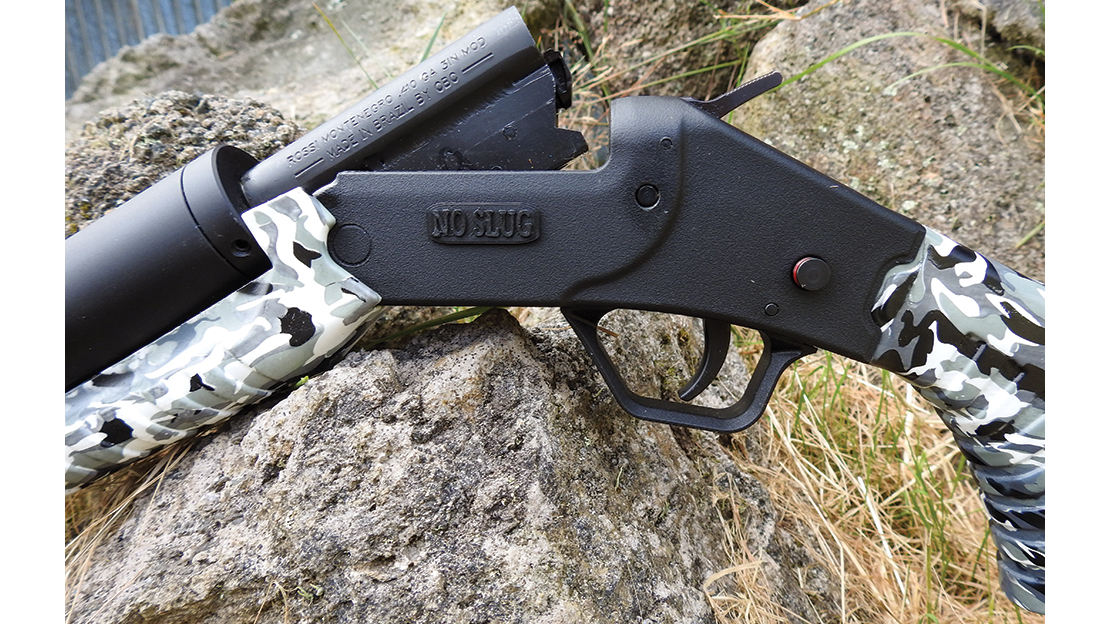
Ammunition
FSS state that each version is designed for use with standard, off-the-shelf, high-velocity cartridges; the barrel is ported to reduce the speed of factory rounds and essentially means they run at subsonic speeds. The manufacturer recommends that a spray lubricant, such as CRC or WD-40, be used in the suppressor to flush the ports after use. Then, once you notice reduction in performance, the suppressors can be pulled apart for servicing; the distributors ask that you contact them for instruction prior to this, or they can service them for a minimal fee.
Most .410g ammo on the shelf will be lead in various pellet sizes. Luckily, I had some #4 and #6 loads on hand for testing as my 12-year-old Luca has, up until last year, been using a .410 for duck hunting. For the 20g, there’ll be plenty of lead options depending on what you’re targeting.
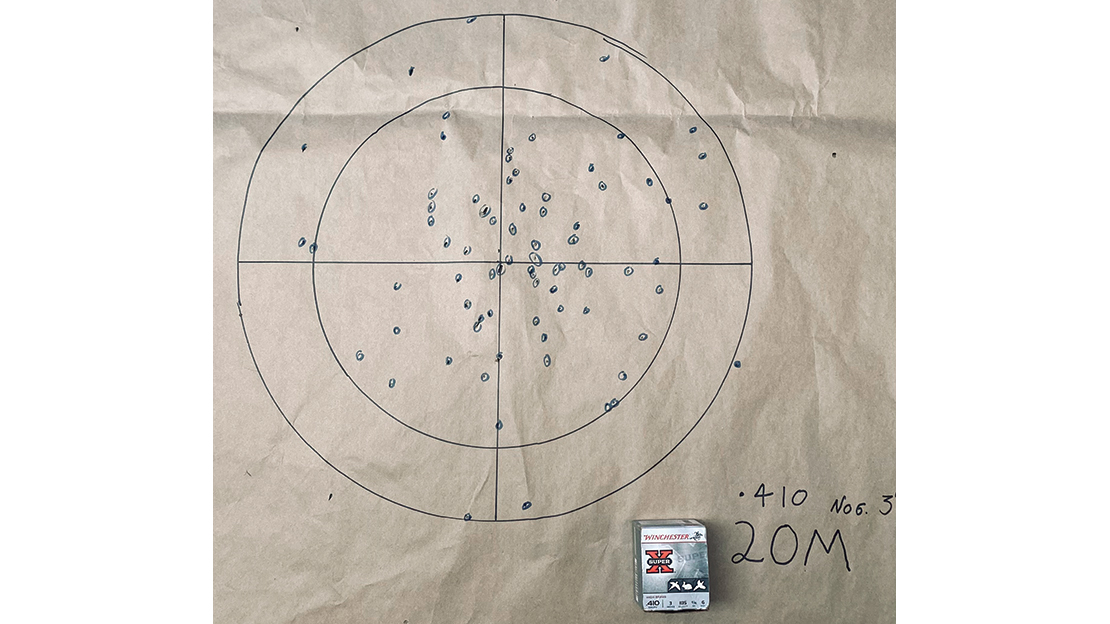
Patterning
As with all shotguns, it’s recommended that you pattern whatever load you’re going to be shooting.
For the .410, I used Winchester Super-X 3″ #6, 19.5gm loads. I started at 15m then went out to 20m; they shot well with dense 81 and 77 pellet counts on target. Shooting out past 20 metres with this load, you’d be pushing the accuracy and knockdown power.
For the 20g model, I used Winchester Super-X 2¾” #6 28gm loads and started patterning at 25m then 30m. Again, both were respectable in the pellet count and accuracy with 202 and 137 respectively. A decent range in the field is 30m; the 28gm load would be good for knockdown out to 35m easily.
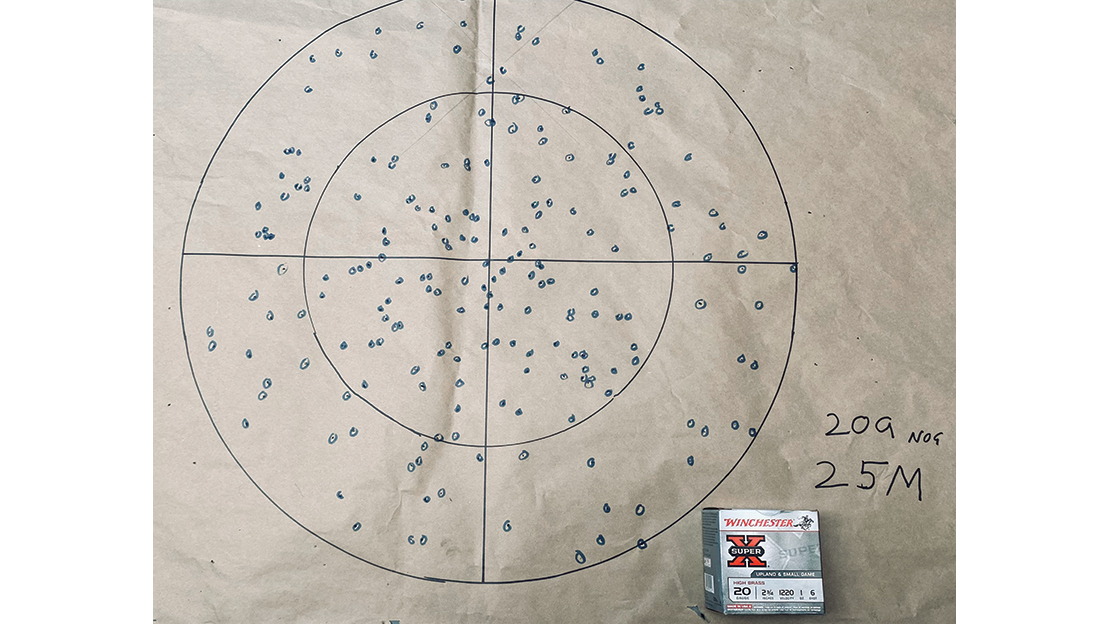
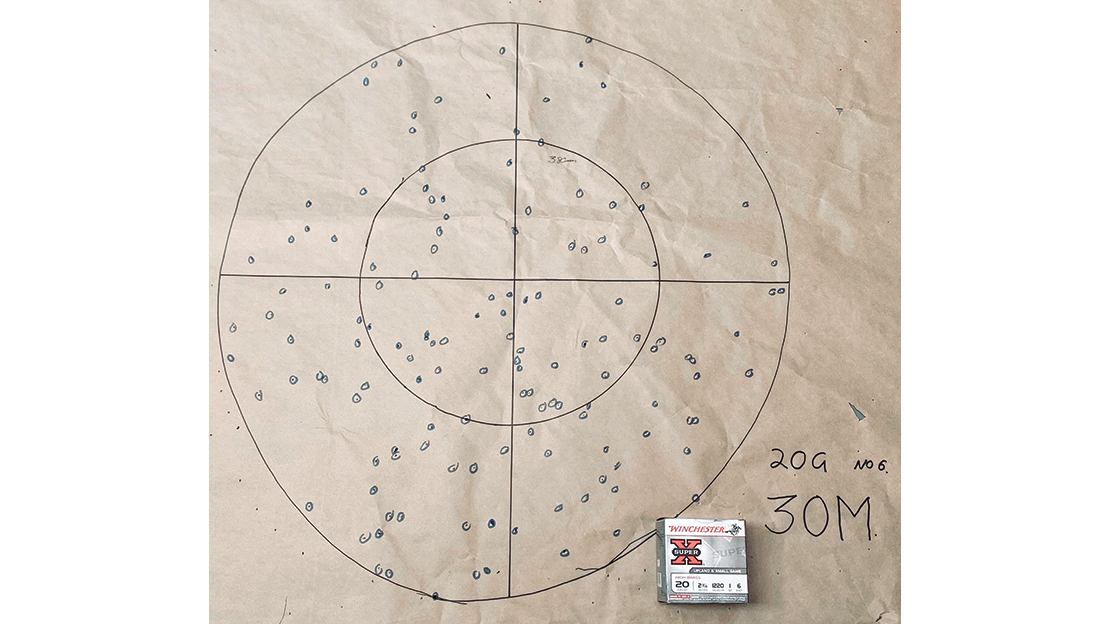
In the Field
Having spent the last few months getting to know our block and what pests also call it home, I’d become all too familiar with how challenging small-game hunting can be. Our biggest pest issues, in terms of sheer numbers, are hares and rabbits; luckily, they’re not overwhelming. This spring, we had huge grass growth which, at times, made the use of the .22 not an option – but it made for exciting shotgunning!
If you’ve ever hunted rabbits, you’ll know that one of their key defence traits is to freeze and hope that you walk right past them – especially if you catch them somewhat by surprise in longer brush or grass. There’ve been times when I’ve almost stepped on the little buggers due to this trait only to see them then sprint off at great speed to seek cover! This is the perfect scenario for a shotgun, and it makes for some great stalking fun – it really hones the reflexes! Carrying the FSS shotguns broke open for safety with a cartridge in the chamber ready puts the heat on the shooter to get a shot away in time. When it comes together and you nail a few, it’s quite the little adrenalin rush – a great form of hunting and one I’d highly recommend you try.
Given how these FSS suppressed shotguns have reduced recoil and reduced noise levels, they make for a very youth-friendly firearm. Luca and I had great fun using these guns in the field. They pointed well and were not burdensome to carry around whilst hunting. As I’ve mentioned already, the lack of a sling mount wasn’t a major issue as it pays to be ready when stalking small game. It was only on the long walks back to the house that the need for a shoulder-carry option was noticed.
Range-wise, we found that past 20 metres with the .410 on game like rabbits, you had to be accurate and go for the vitals or head shots; whereas the 20g was good for easily out to 35m with a 28gm load. Both models suit their main purpose of pest control very well.
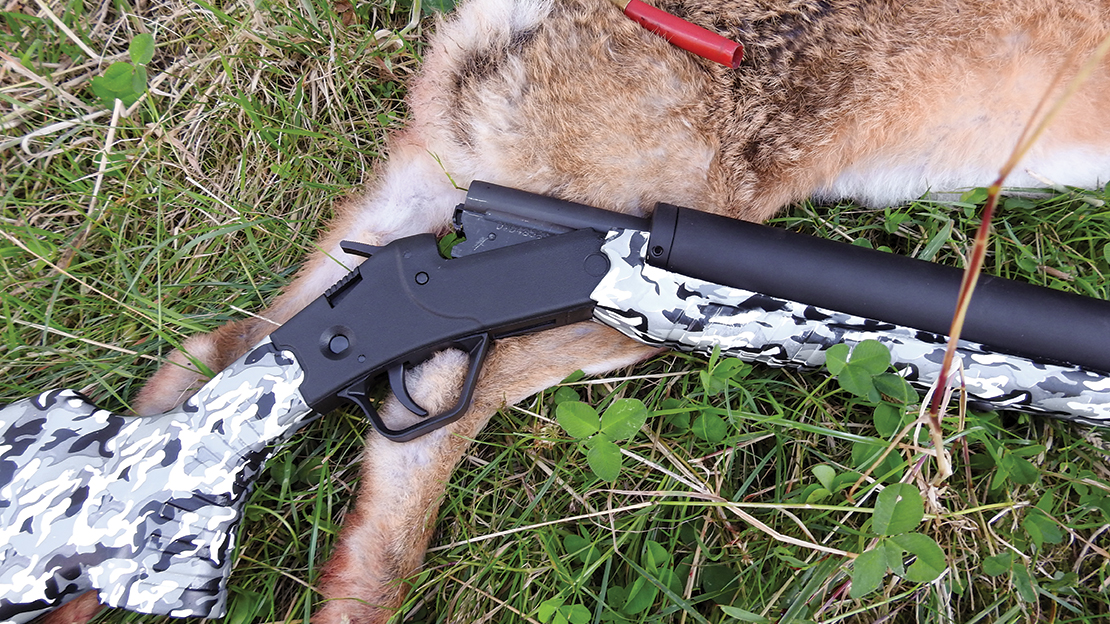
Noise Level
Stating decibel ratings can be controversial and open to interpretation, and not all decibel metres are created equal. Consequently, I’ll respectively steer clear of this topic. However, the manufacturer/distributor state that the .410 is basically ‘silenced’, whilst the 20g is ‘suppressed’.
Using Winchester .410 Super-X 3″ #6 shot, which is a 19.5gr load, the noise was more of a soft thud for sure and quieter than my .22LR rifle.
With the 20g model, the Winchester 20g Super-X 2¾” #6 shot, which is a 28gr load, was similar in noise to an unsuppressed .22LR. Of course, factors like ammo and location have some effect on this.
What we did do was compare our own guns in the field with the review models. We have a Yildiz single shot .410 and a Yildiz semiautomatic 20g, and both FSS models were substantially quieter than the non-suppressed models.
Also, note both models are NOT slug compatible.
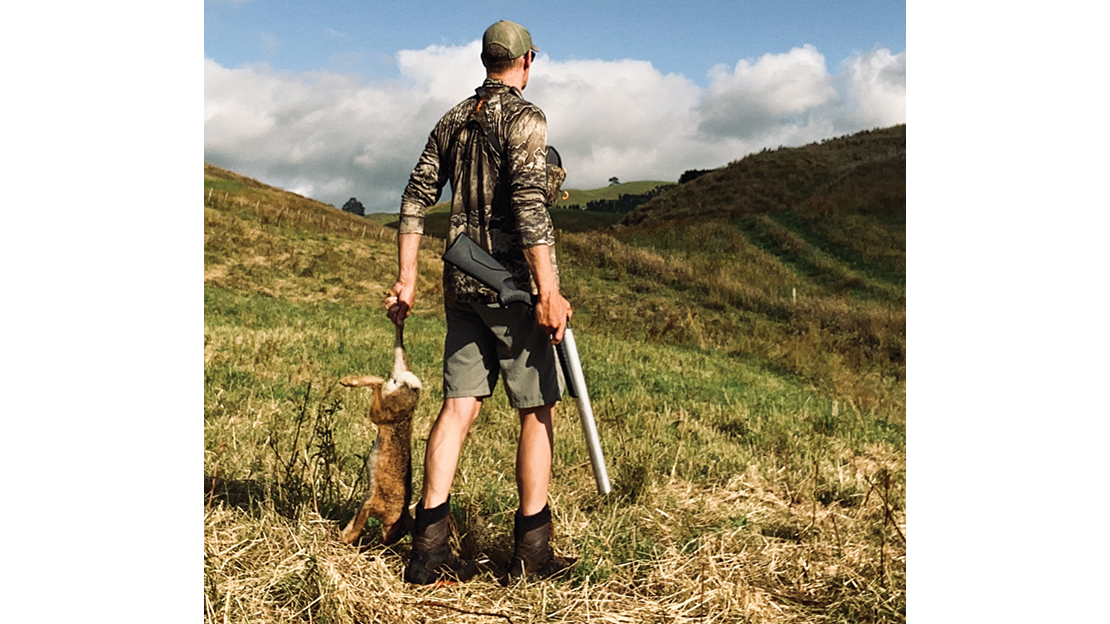
Conclusion
The reduced noise factor is a huge bonus for these shotguns; one of our neighbours has horses, and I was very aware of not wanting to spook them and to keep good neighbourly relations intact. Making sure our own cattle were not spooked was also important.
Other reasons you’d consider the FSS suppressed shotguns as a pest control option over a .22LR would be lack of ricochet risk and less distance travelled by the shotgun pellets. You still need to consider your firing zone, of course, but less carry means they’re perfect in tighter areas allowing for use in orchard, lifestyle block and farming situations. The reduced recoil is a great bonus and is perfect for youth or new shooters.
RRP
.410 $1599
20 gauge $1749

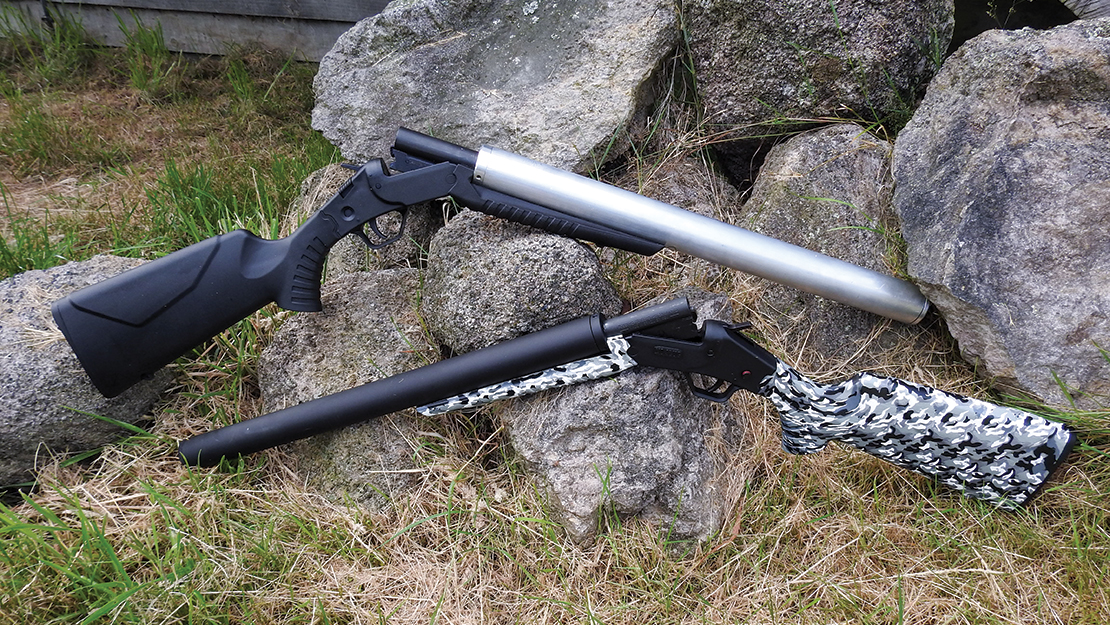
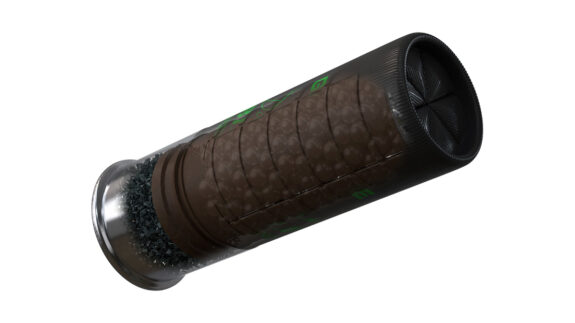
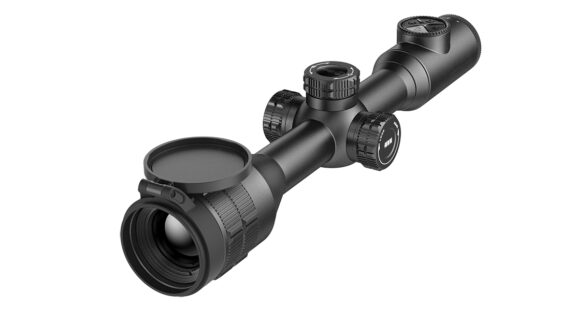

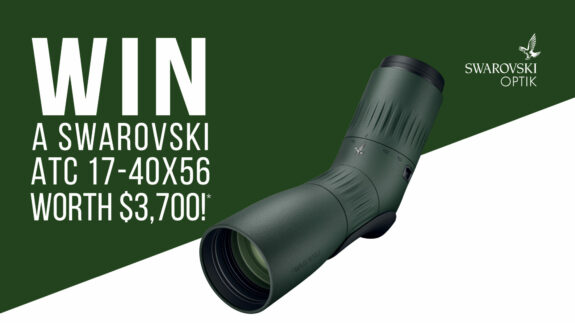
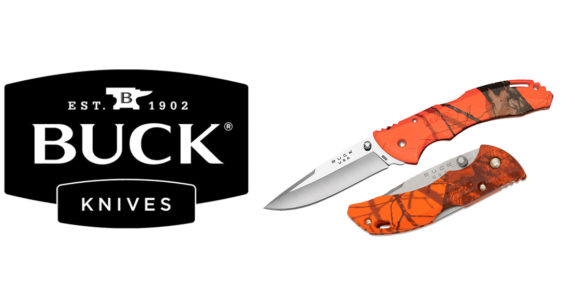
SHARE YOUR BEST PICS #NZRODANDRIFLE